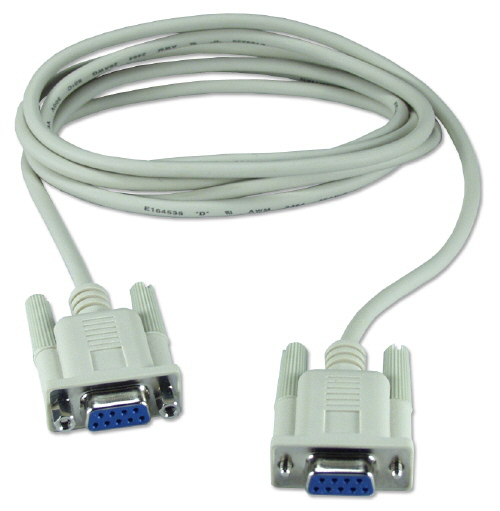 QVS Db9 Female To Female Standard Serial Rs232 Null Modem Cable 3m
QVS Db9 Female To Female Standard Serial Rs232 Null Modem Cable 3m
Pour une aide personnalisée ou une livraison plus rapide
+32 2 558 30 00
All IBM PC and compatible computers are equipped with serial ports for communicating with external devices. A serial port sends and receives data one bit at a time over one wire. While it takes eight times as long to transfer each byte of data this way in comparison to a parallel port, only a few wires are required. Usually, the serial port is "Full-duplex", meaning it can send and receive data simultaneously. This is possible when there are separate lines; one for transmitting and one for receiving. Some devices support only one way communicationand only have two wires - one for transmitting and one for the signal ground.
Two terms that are important to be familiar with are DTE & DCE
DTE stands for Data Terminal Equipment, and DCE stands for Data Communications Equipment. These terms are used to indicate the pin-out for the connectors on a device and the direction of the signals on the pins. Your computer is a DTE device, while most other devices are usually DCE devices. DTE & DCE DETERMINATION GUIDE DTE DEVICES Terminals (Gender: Male) DCE DEVICES Modems, CSU/DSU, Multiplexers (Gender: Female) SELECTABLE DTE OR DCE DEVICES Routers, Hubs, Switches, Access Servers (Gender: Either) Selectable devices usually have a jumper, switch, or software command used to select either DTE or DCE.
Results 0
- Avis
- Écrire des avis
- Questions et réponses
- Poser une question

















 Livraison GRATUITE sur une commande de plus de € 100 Excl.TVA.
Livraison GRATUITE sur une commande de plus de € 100 Excl.TVA.

